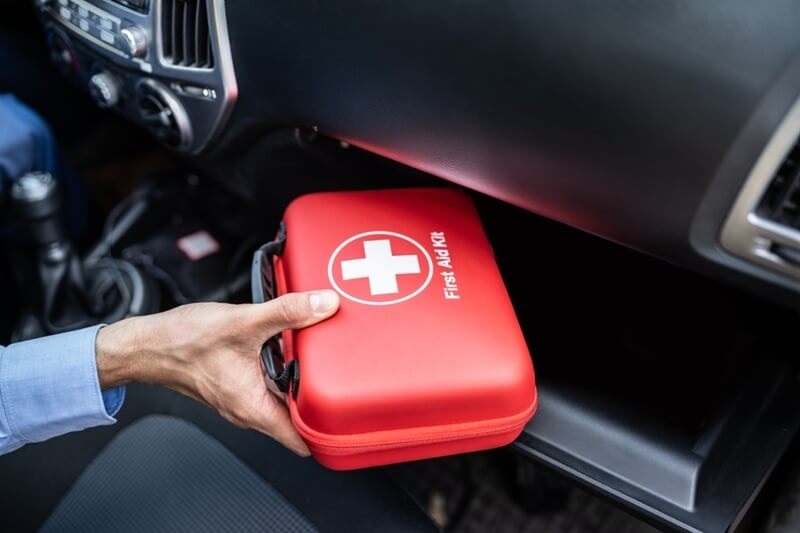
In terms of intelligent driving, a quality car emergency kit is no longer a suggestion—it's a requirement. As technology in vehicles continues to advance, so too do the issues drivers encounter on the road. From spontaneous mechanical failures to inclement weather, being prepared with the proper vehicle safety tools and roadside supplies can be the difference between life and death in 2025.
Whether daily commuting or a road trip of hundreds of miles, an updated car emergency kit keeps you ready for whatever happens. This all-inclusive list of 20 essentials bridges old-fashioned utility and new-fangled technology. Here's how to update your car survival kit and get your car ready for any season, but particularly winter's icy clutches with winter driving preparation.
Despite the smart car, GPS, and warning systems, breakdowns and emergencies can still happen. A car emergency kit is no longer simply prudent—now it's responsible vehicle ownership.
In 2025, wild weather patterns, heavier road usage, and sophisticated but sometimes unpredictable vehicle systems put drivers in positions where they need to anticipate a multitude of situations. The correct equipment can ensure minor annoyances are not turned into serious dangers. Let's look at what should be included in your emergency kit this year.

Medical emergencies wait for no one. A first aid kit is a priority. It should have:
This single item can stabilize wounds until help gets there. It also meets the key box for vehicle safety items compliance in a number of states.
Dead batteries still occur—even on hybrids and EVs. Ensure your cables are:
Couple them with a general knowledge of how to safely use them to prevent further problems.
Even better than jumper cables, however, is a portable jump starter. In 2025, many of these devices include:
No need for a second vehicle—ideal for single drivers or stranded travelers.
Breakdowns can and do occur at night. A LED flashlight and spare batteries provide illumination. Select models with:
It's an essential element of an intelligent roadside kit and provides greater visibility for flagging assistance.
Visibility is survival. They assist on dark roads, during fog, or snow. Have at least:
Don't let a puncture spoil your day. Include:
Excellent for repairing small punctures until you arrive at the closest service station.
A flat in freezing weather is worse without air. Find a 12V portable air compressor that you can plug into your car's outlet and includes:
This is a winter driving preparation must-have that's convenient year-round.
Freezing temperatures can be hazardous if you become stranded. Pack:
They take up minimal space but offer maximum warmth—critical during winter driving prep.
Compact and versatile, a multi-tool replaces multiple items in your kit. Choose one with:
It’s one of those must-have auto tools that can help in more ways than you’d expect.
From hanging bumpers to cracked hoses, duct tape is the solution. Keep a small roll in your car emergency kit for quick repairs that get you going.
Power loss is frightening in emergencies. Keep in your car emergency kit:
Fluid and calories count, particularly if you're stranded for hours. Bring:
These keep you awake and healthy until help arrives.
Engine or battery fires are unlikely but can happen. Use an ABC-rated vehicle fire extinguisher. Install it firmly in your trunk or under a seat.
Visibility is paramount during cold weather. A quality ice scraper and snow brush combo clears your windshield fast. For icy states, this equipment is a must-have for winter driving prep.
Whether you're fixing a flat tire, shoveling snow, or checking under the hood, you'll want to protect your hands and head. Select:
You may not use it often, but when you need it, you won't know what to do without it. Find:
Ideal when you need some assistance getting out of snow or mud.
Fuses or bulbs blown can destroy major systems such as headlights, wipers, or blinkers. Having spares will enable you to replace them at once and remain safe and compliant.
These allow you to make simple repairs on the spot.
In 2025, your phone might still go out of range. Keep paper road maps of your neighborhood and frequently driven areas. They provide a sure backup navigation source when technology doesn't work.
Your car manual contains important information for dashboard alerts and do-it-yourself repairs. Include a list of emergency contacts:
Use a plastic bin or a weather-resistant duffel bag. Leave it in the trunk or under a seat, and check every six months to:
A car emergency kit that is well-maintained provides peace of mind and actual use in everyday life.
Living near the coast? You will need ponchos and bug spray. Driving in the mountains? Consider getting chains or a traction pad. Make your kit fit your driving environment and climate.
With the proper car emergency kit, you're not only responding to emergencies—you're preparing for them. Your kit is your first line of defense against the unexpected, from old-school car safety items like first aid kits and jump starters to very recent road essential items such as power banks and inflators.
Fast-forward to 2025, with more miles and more technology under the hood, drivers will need smarter car survival items. Don't let a flat tire this time, dead battery another, or icy storm help you stay stranded. Make your kit today, and drive on.
This content was created by AI